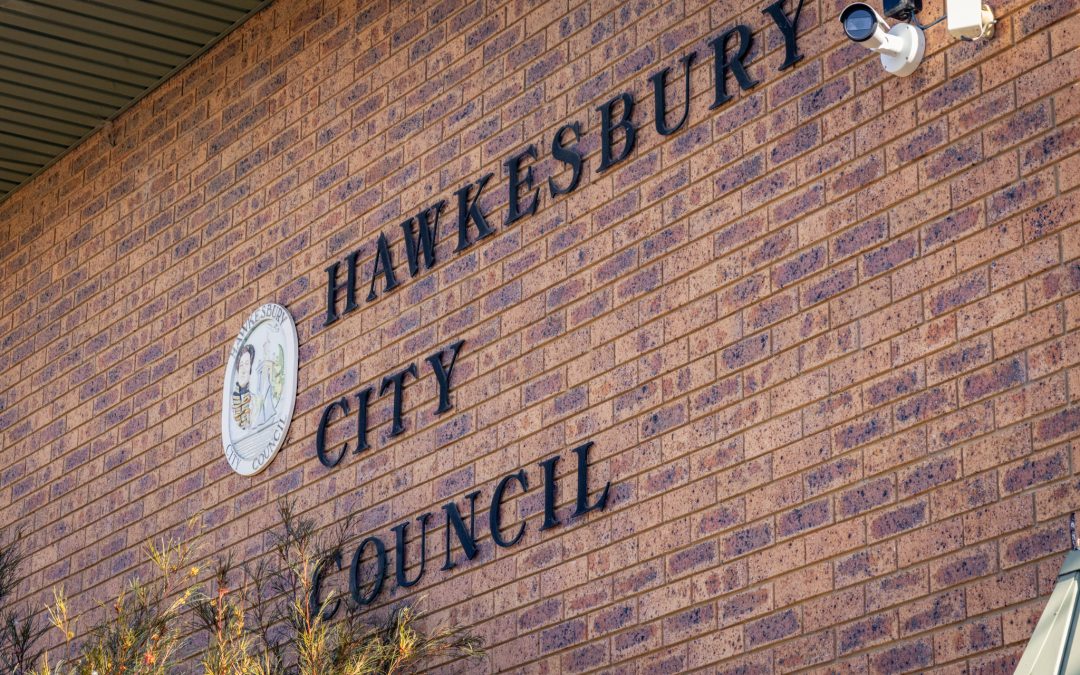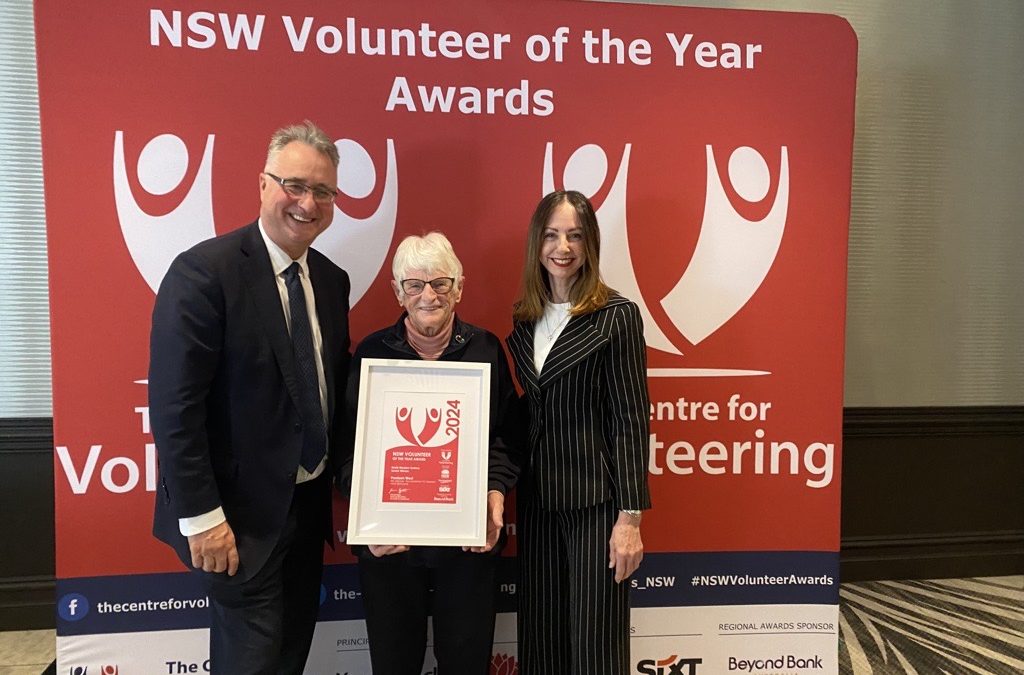Hawkesbury Post contacted all...


Hawkesbury Post contacted all...

In a heartwarming recognition of community...

After more than two decades of dedicated service, the...

Two local Liberal Mayors – Hawkesbury’s Patrick Conolly and the Hills Shire’s Peter Gangemi – fronted a brief media conference this last week at Thompson Square, with a still partially submerged Windsor Bridge behind them, to push for raising Warragamba Dam wall, but if the up to $2billion project does go ahead will it stop or lessen the floods?
Not everyone thinks it’s the “silver bullet”, including a leading expert on civil and environmental engineering who believes there are alternatives which in some cases are more effective, quicker to put in place, and less expensive.
Mayor Conolly, who in January rammed through – using his casting vote which gives him 2 votes – a Hawkesbury Council resolution pushing the state government to get the dam wall raised, said this last week at the media conference that the region had suffered five floods in two and a half years.

Hawkesbury Mayor Patrick Conolly (right) with Hills Shire Mayor Peter Gangemi at their media conference
But while “raise the wall” is clearly an emotive three-word call, would raising the Warragamba Dam wall actually help keep floods at bay, or even significantly lessen their impact? And is it the best way of cutting flood risk?
We put these questions to an expert – Professor Stuart Khan of the School of Civil & Environmental Engineering and Director at the Australian Graduate School of Engineering (AGSE) at the University of NSW.
“It really is a fact that houses on a flood plain are exposed to a risk of flooding,” he says.
“This is partially because there are many sources of water to the Hawkesbury Nepean valley, and partially because any flood mitigation dam can be overwhelmed in a very large event.
“While Warragamba is an important source of water that contributes to flooding, it is far from the only source,” he told the Post.
“Other sources include the upper Nepean River, the Grose River, the Colo River, the Macdonald River, South Creek and Eastern Creek.

Prof Stuart Khan – and yes that’s a glass of water…
“That said, 14m of extra wall height on Warragamba would provide 1000 gigalitres of storage.
“This storage would play an important role in holding back water from that source. Doing so would enable dam operators to delay releases of this captured floodwater to avoid coinciding with flow peaks from other sources.
“This would have the effect of reducing the peak flood height for many floods, as well as providing additional time before a flood peak occurs, enabling people to make more effective use of evacuation routes.”
Cllr Conolly claimed raising the dam wall by 14 metres, at a cost of between $1.6billion and $2billion, will potentially save an estimated 7000 homes being impacted by flood damage in the Hawkesbury, if we had another flood like the biggest back in 1867, though he didn’t reveal where that number came from.
He said:
He added, “it does seem like a no brainer. We don’t understand why the NSW government hasn’t been able to get this project off the ground.”
Mayors Conolly and Gangemi call for Warragamba Dam wall to be raised. Video taken by Paul Caleo
But he believes one reason could be what he calls ‘environmental groups’.
“They [the NSW government] have spent a lot of time trying to keep protest groups happy, there are environmental groups that don’t want the National Park flooded behind the dam wall,” Cllr Conolly says.

Warragamba Dam spilling…
Hills Shire Mayor, Peter Gangemi, said at the media event, reacting to floods each time they happened wasn’t enough.
“The communities of western and northwest Sydney are very supportive of the Warragamba Dam wall being raised, and I think the two Mayors coming here today [at the Hawkesbury River] is a symbol of that,” Mayor Gangemi said.
“Our residents have been through four major floods in 16 months. They are asking that more be done to protect their homes and businesses and raising the Dam wall is the immediate action they are calling for.”
Raising the Dam wall – if it ever gets the go-ahead – is at least a 5 year process and more likely a decade long build and there’s still no decision on who will fund it. The state government is asking the Commonwealth to fund 50% of the cost.
“Raising the Dam wall 14 metres could reduce flood levels by up to 3.5 metres in the Hawkesbury River,” claims Cllr Gangemi, “and that is the action that the residents along the River have been asking for, and that is why we are here, to advocate for them,” he added.
Councillor Conolly also turned the debate political, flagging the dam wall will be a potential State election issue when that rolls around this coming March.
But Wollondilly Shire Mayor Matt Gould – he’s an independent – has also stepped forward into the debate and he says his Council is firmly against raising the dam wall and he doesn’t believe raising the wall will “be the silver bullet”.
He says keep Warragamba as it is, but with less water in it, and use the desalination plant, which as taxpayers we all pay for even when it isn’t running, which would mean no spills from Warragamba and a secure drinking water supply for Sydney. It’s a relatively low cost solution.

Wollondilly Mayor, Matt Gould
But as he points out, even with Warragamba playing a role as a flood mitigation dam, “the [State] government’s own modelling shows that more than 50% of flood waters can come from the Upper Nepean and catchments that are effectively downstream from the proposed wall”.
Wollondilly Shire covers part of the Blue Mountains, Macarthur and Central Tablelands regions and includes a large area that would be potentially submerged if Warragamba Dam’s wall were raised.
Mayor Gould’s area also experienced floods during this latest flood event as a result of the Nepean River overflowing. The Nepean River ultimately flows down into the Hawkesbury River.
“I have been on the ground dealing with floods in the Wollondilly Shire for the past week, with the Nepean River experiencing major flooding. Many properties have been affected, our roads have once again been significantly damaged, and our businesses have been on constant high alert all week,” he said.
“I fully understand the impacts of flooding on the Hawkesbury Nepean but…
“This has been seen from the floods that have impacted Wollondilly and Camden this week, where we had major flooding in excess of 16 metres at some locations.
“None of this water is captured by Warragamba Dam and all of it flows through to the Lower Nepean and Hawkesbury, so we would have been facing significant flooding along the Hawkesbury Nepean even without the impacts of water from the Warragamba River.
“There clearly needs to be more done to manage and mitigate flooding along the Hawkesbury-Nepean, but there are faster and better options than raising Warragamba Dam that have not been properly considered,” says Mayor Gould.
“We could also lower the drinking water storage of Warragamba to create an additional permanent air gap and offset this through greater use of the desalination plant that we are already paying for and that is currently not being utilised.”
If you are already a Hawkesbury Post supporter, thank you! Our site is free, relying on our supporters to operate. Independent journalism is more important than ever, please consider contributing.
Don’t pay so you can read it. Pay so everybody can read it!